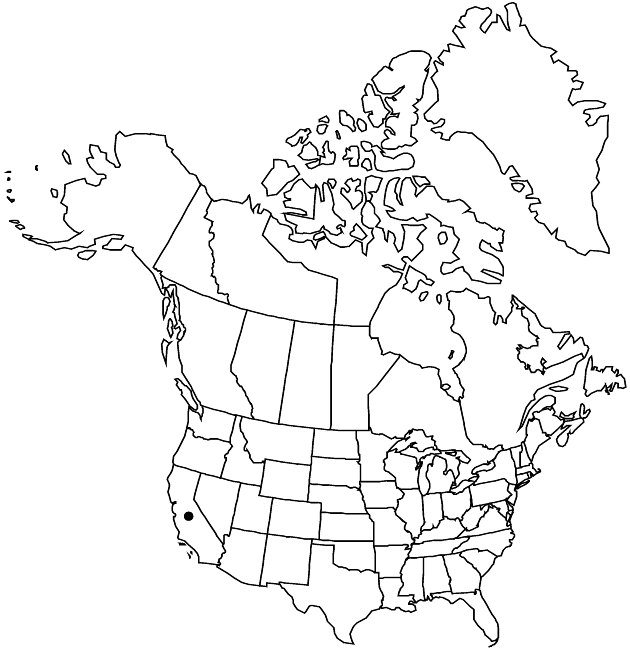Difference between revisions of "Layia jonesii"
Proc. Amer. Acad. Arts 19: 18. 1883.
FNA>Volume Importer |
imported>Volume Importer |
||
| (3 intermediate revisions by 2 users not shown) | |||
| Line 6: | Line 6: | ||
|place=19: 18. 1883 | |place=19: 18. 1883 | ||
|year=1883 | |year=1883 | ||
| + | }} | ||
| + | |special_status={{Treatment/ID/Special_status | ||
| + | |code=E | ||
| + | |label=Endemic | ||
| + | }}{{Treatment/ID/Special_status | ||
| + | |code=C | ||
| + | |label=Conservation concern | ||
}} | }} | ||
|basionyms= | |basionyms= | ||
| Line 33: | Line 40: | ||
-->{{#Taxon: | -->{{#Taxon: | ||
name=Layia jonesii | name=Layia jonesii | ||
| − | |||
|authority=A. Gray | |authority=A. Gray | ||
|rank=species | |rank=species | ||
| Line 47: | Line 53: | ||
|publication title=Proc. Amer. Acad. Arts | |publication title=Proc. Amer. Acad. Arts | ||
|publication year=1883 | |publication year=1883 | ||
| − | |special status= | + | |special status=Endemic;Conservation concern |
| − | |source xml=https:// | + | |source xml=https://bitbucket.org/aafc-mbb/fna-data-curation/src/2e0870ddd59836b60bcf96646a41e87ea5a5943a/coarse_grained_fna_xml/V19-20-21/V21_649.xml |
|tribe=Asteraceae tribe Heliantheae | |tribe=Asteraceae tribe Heliantheae | ||
|subtribe=Asteraceae (tribe Heliantheae) subtribe Madiinae | |subtribe=Asteraceae (tribe Heliantheae) subtribe Madiinae | ||
Latest revision as of 21:13, 5 November 2020
Plants 7–55 cm (self-incompatible); glandular, not strongly scented. Stems usually purple-streaked. Leaf blades lanceolate or oblanceolate to linear, 10–70(–90) mm, margins (basal leaves) lobed to pinnatifid. Involucres ± broadly urceolate, 4–8 × 4–8(–12) mm. Phyllaries 13–27, apices usually shorter, sometimes longer than folded bases. Paleae in 1 series between ray and disc florets. Ray florets 13–27 (in 2 series); laminae proximally yellow, distally white, 5–10(–14) mm. Disc florets 35–100+; corollas 3–5 mm; anthers ± dark purple. Ray cypselae glabrous. Disc pappi 0 or of 8–14 whitish, ± ovate or elliptic, ± equal scales 0.5–2 mm, not plumose, not adaxially woolly (bases sparsely setose). 2n = 14.
Phenology: Flowering Mar–May.
Habitat: Grasslands, openings in chaparral, on clay or serpentine soils
Elevation: 0–400 m
Discussion
Of conservation concern.
Layia jonesii occurs on the immediate coast from Cayucos to Morro Bay and in the Outer South Coast Ranges near San Luis Obispo. Layia jonesii is most closely related to L. leucopappa and L. munzii (B. G. Baldwin, unpubl.); the three species are interfertile (they do not co-occur; J. Clausen 1951).
Selected References
None.
